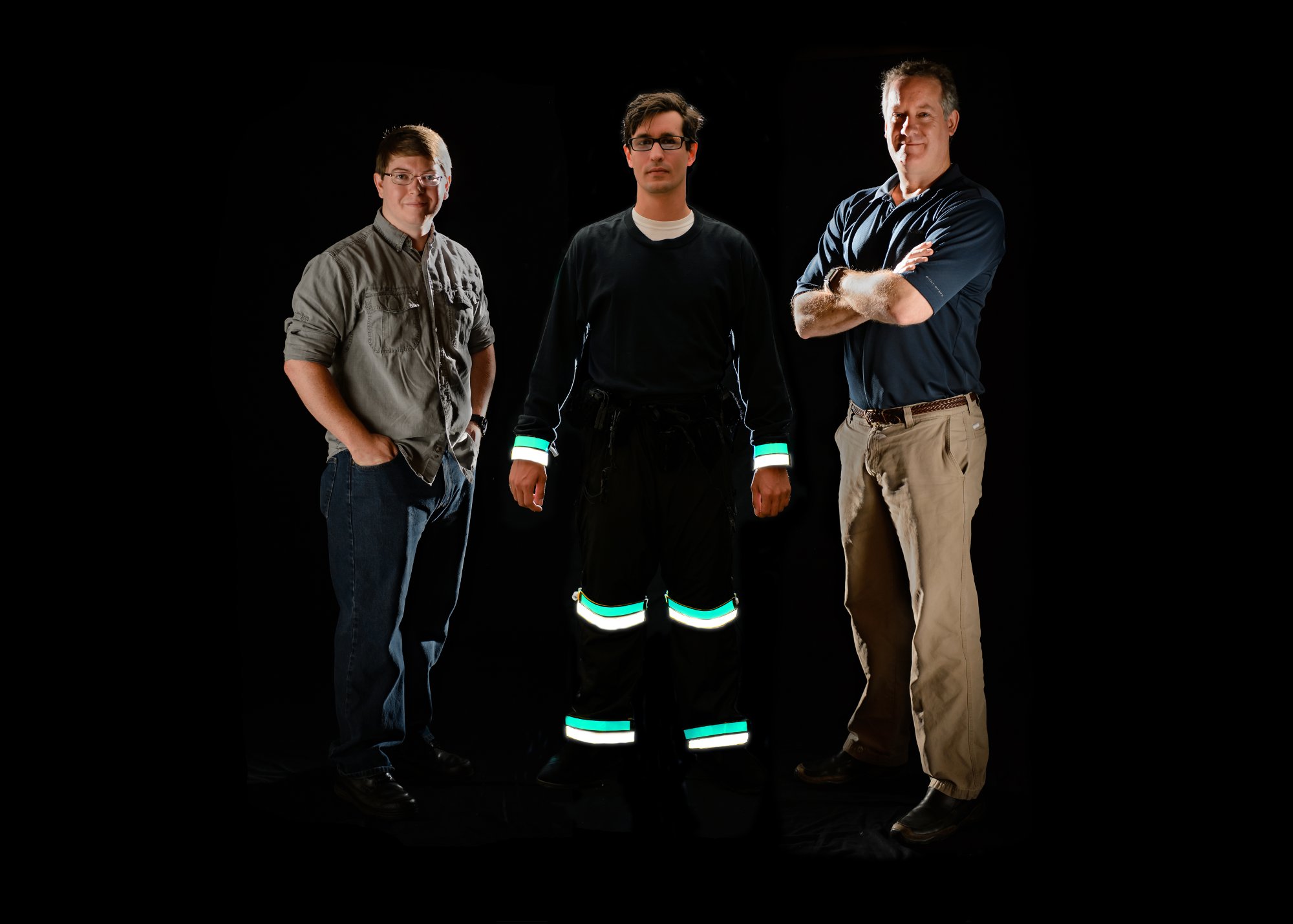getting seen to get safe
by Rick Uhlmann
Psychologists employ a technology used in Hollywood filmmaking to make pedestrians and bicyclists more conspicuous to drivers.
“Human factors psychologists use science to solve real-world problems that develop between people and technology,” Rick Tyrrell says. “In the case of our research, getting the science into the public domain can change—and save—lives.”
At stake in Clemson’s research are the lives of 200,000 worldwide—the number of pedestrian fatalities that occur at night. Tyrrell, along with Ph.D. student Drea Fekety, is using electroluminescent technology that does not require headlight illumination to create better visibility of pedestrians and cyclists. The technology was used to make the costumes in the 2010 Disney movie Tron Legacy.
Clemson’s nighttime vision research has caught the attention of two of the largest athletic clothing and bicycle manufacturers in the world. Through research grants, the industry giants are tapping Clemson’s safety research to reduce risks to pedestrians and bicyclists.
“At night, an overwhelming majority of drivers in our research think they can see pedestrians from a safe distance, and most pedestrians think they’re conspicuous to drivers. However, our ten years of research makes clear neither the driver nor the pedestrian is accurate in their perceptions,” Tyrrell says.
Clemson’s research on making pedestrians more conspicuous to drivers at night has also been recognized by the international community, particularly in the use of “biological motion wear.”
Biological motion wear utilizes reflectors on the body’s moving parts, such as elbows, wrists, knees and ankles.
New Zealand and Australia have endorsed the use of biological motion wear for the country’s construction workers, firefighters, police officers and EMTs, in part as a result of Clemson research, Tyrrell says. He is hoping the safety gear will also be more widely endorsed in the U.S.
“Road workers wearing reflective vests have been somewhat successful, but it isn’t enough,” Tyrrell says. “Putting retro-reflectors on the body’s moving parts makes a pedestrian far more conspicuous to drivers than a seemingly motionless reflective device on one’s torso.”
Tyrrell and researcher Fekety are quick to point out that a reflective device isn’t effective if it isn’t being illuminated by a vehicle’s headlights. For example, a roadside pedestrian donning biological motion wear and not in a headlight’s aim may not be noticeable to a driver unless he or she steps into the path of the vehicle.
Enter Fekety and the newest phase of Clemson research, which could help keep cyclists and runners safer on the road. Fekety has repurposed the electro-luminescent technology in an effort to develop garments that don’t require direct illumination to be seen. The technology employs flexible panels that glow with a battery powered current.
“We’ve applied eight-inch-by-one-inch electro-luminescent and reflective strips to a black track garment. Each of the luminescent strips runs off two AA batteries,” Fekety says. “We developed a second garment that utilizes only the traditional reflective material. For both garments, we strategically placed the reflective and luminescent materials on movable body parts — ankles, knees, and wrists.”
Fekety says drivers were better at seeing the garment that combines luminescent and reflective materials. “This combination garment was significantly more effective at conveying the pedestrian’s movement when he was outside the oncoming car’s headlight beams.”
Though the luminescent materials proved more visible outside a headlight’s beam, Fekety says work remains before the technology finds its way to the public. “Making it less bulky and more usable is one thing that needs to be addressed. That development by our industry partners.”
As Clemson researchers strive to create a safer world for pedestrians and bicyclists, one thing will remain constant: Human behavior will be at the root of finding a solution.
“Our job is to explore how to best merge developing technology with perceptual capabilities of drivers,” Tyrrell says. “If we’ve done that job well, then apparel and lighting technologies will be developed to create a safer world for pedestrians and other vulnerable road users.”



